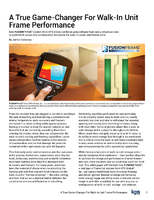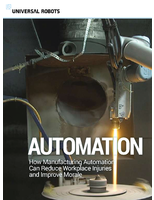W&W Communications Smashes Through H.264 Performance Barrier with the Introduction of Its Taos Architecture
Taos achieves the highest performance, highest channel density, lowest latency, cost and power dissipation for H.264 video coding demonstrated in the market today
Santa Clara, California, July 24, 2007 - W&W Communications, Inc., the leader in H.264 HD codecs, announced today its ultra high-performance, high channel-density, low-latency and low-power Taos architecture for the H.264/MPEG-4 AVC (Part 10) video-coding standard. The Taos architecture is specifically optimized for video surveillance, two-way video communications and wireless video network applications, where very high channel densities, high performance, low latency and power efficiency are critical requirements.
Taos shatters through the H.264 performance barrier by being the first to enable encoding of 1920x1088 resolution video at full 60 frames per second in single chip implementations. It is also the first to smash through the channel-density barrier for H.264 with 8 simultaneous encode channels in D1 resolution at full 30 frames per second. In addition to providing superior performance and image quality it is the first to achieve near-zero end-to-end encode-decode latency, a significant ability for the rapidly growing latency-sensitive focused markets.
"In defining the Taos architecture we worked closely with leading OEMs in the video surveillance, video conferencing and wireless home video distribution industry," said Lars Herlitz, CEO and co-founder of W&W Communications. "Taos' capabilities give our customers the ability to truly innovate with H.264 in their products. The high channel-densities mean lower costs at less than $1.50 per CIF stream. This opens up new opportunities for OEMs."
"As H.264 establishes itself in the market, it is fulfilling its promise to serve a very broad range of applications," said Michelle Abrahams, Principal Analyst Multimedia & Consumer Markets, at market research firm In-Stat. "Taos-based H.264 video codecs from W&W Communications contribute to the fulfillment of this promise by addressing latency-sensitive applications in the video surveillance, video conferencing, live video broadcast and wireless video networking space. The combination of zero latency, multi-channel processing and high-definition opens up new and exiting opportunities in these markets."
According to market research firm iSupply, global video surveillance camera revenue is expected to grow from $4.9 billion in 2006 to more than $9 billion in 2011, a compound annual growth rate of 13.2 percent. Unit shipments of video surveillance equipment are expected to more than double from 29.8 million in 2006 to 65.7 million in 2011 and the market for surveillance-camera chips is forecasted to hit $1.25 billion in 2011.
"HD capabilities open up new possibilities in video surveillance, such as facial recognition. True multi-stream capabilities allow OEMs to cost-reduce DVRs and offer IP cameras that can simultaneously record in HD to hard disk and in CIF or QCIF for transmission to a cell phone", said Kishan Jainandunsing, VP Marketing at W&W Communications. "Near-zero latency makes Taos the ideal solution for latency-sensitive applications in surveillance, video conferencing and wireless video distribution in the home, where instant feedback is a hard requirement."
Unprecedented Performance, Flexibility and Low Latency
The Taos architecture has the processing bandwidth to encode and decode 1080p60 video. This processing bandwidth can be distributed in a flexible manner. For example, streams can be encoded or decoded simultaneously as one 1080p60, two 1080p30, four 720p30, eight D1 or 32 CIF streams at 30 frames per second, as well as any other combination of streams, resolutions and frame rates, equating to the maximum processing capacity of a single 1080p60 stream.
"Taos implements a groundbreaking architecture that elegantly scales in resolution, streams and processing bandwidth," said Farhad Mighani, VP Engineering at W&W Communications. "Advanced power management keeps dissipation below 25mW per CIF channel. Taos strikes a balance between a hardwired and programmable approach, while maintaining total flexibility without the software development overhead typically inherent with programmable solutions."
Taos has end-to-end encode-decode latency of less than 2ms. This unprecedented "zero" latency is crucial for video conferencing, telepresence and video telephony applications, wireless video distribution networks, where channel flipping, navigation and gaming requires instant feedback and for automated video surveillance systems where a facility needs to be secured immediately upon intruder detection.
"Taos implements intelligent motion vector search and all motion estimation and intra-prediction modes," said James Liu, CTO and co-founder of W&W Communications. "Consequently, its performance comes very close to theoretical. Taos also includes patented in-loop noise reduction filters. These filters are responsible for up to 45% additional bit rate reductions, further reducing network bandwidth and storage demands. The superior video quality and near-zero latency of Taos has been proven for over a year in our earlier HD codec products."
Taos delivers the same video quality at roughly half the bit rates of MPEG-2 and MPEG-4. Other features include a flexible encoder toolset with in-loop de-blocking filter, single-pass bit rate control, content-adaptive noise filtering, programmable cost functions for motion vector and prediction mode coding, efficient search algorithms, large search area, ½ and ¼ pixel motion estimation interpolation and error resiliency and concealment. Next to Baseline Profile, Taos ads support for Main and High Profile without compromising near-zero latency.
First Product Availability
The first products based on the Taos architecture are scheduled for sampling in Q3-Q4 2007. For more information visit www.wwcoms.com.
About W&W Communications, Inc.
W&W Communications is a fabless semiconductor company, which develops best-in-class video compression solutions for consumer, professional, enterprise and infrastructure applications. Its innovative product line includes highly optimized, low-latency, power-efficient, high-definition H.264 codecs and multi-format, multi-channel transcoders. The company is headquartered in Santa Clara, CA with offices in Beijing, China and Madrid, Spain. For more information visit www.wwcoms.com.




